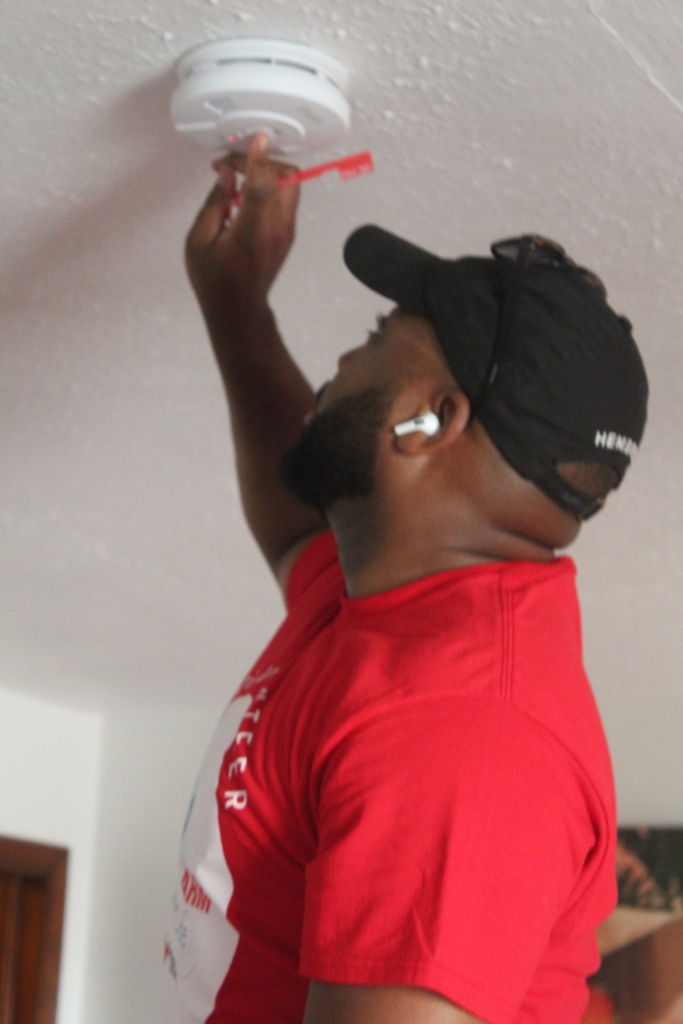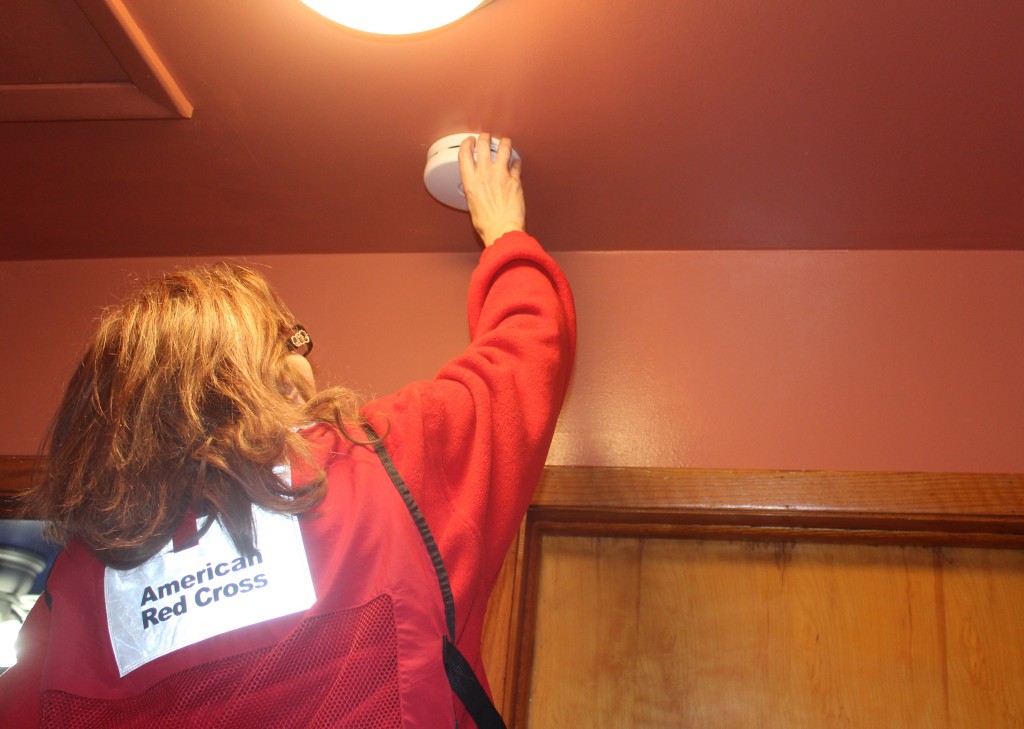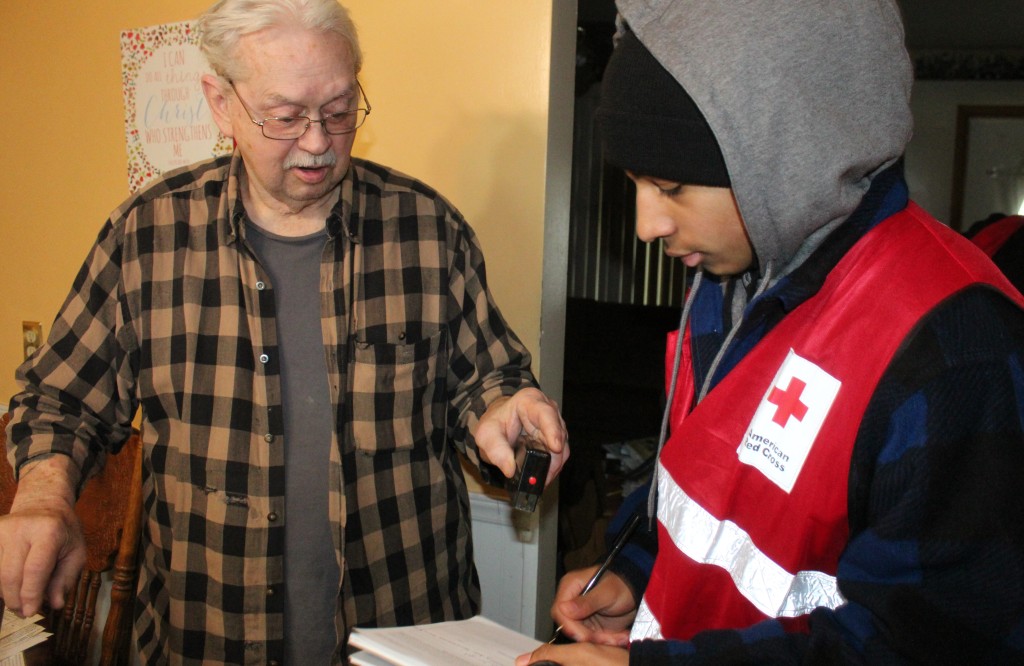Through the work of our dedicated American Red Cross volunteers and partners, we have now saved more than 2,000 lives through our Home Fire Campaign. More than one-third of those are children.

Home fires are this country’s deadliest and most frequent type of disaster. Seven people in the U.S. lose their lives to a fire in their home every day.
Because of these tragic statistics, the Red Cross launched its Home Fire Campaign to reduce home fire- related deaths and injuries. Since its start in 2014, the campaign is credited with helping save 2,002 lives as of the end of November, 2023.
As part of the Home Fire Campaign, the Red Cross works with local partners to install free smoke alarms and share fire safety information with families. Through the support of our community partners and dedicated volunteers, the campaign has installed 2.7 million smoke alarms and helped to make 1.1 million homes safer.
Long before the launch of the national home fire campaign, the Northern Ohio Region was installing smoke alarms in homes locally. The effort began in the city of Cleveland in 1992, when businessperson and philanthropist Sam Miller joined with other civic leaders, the Cleveland Fire Department, and the Red Cross to reduce fire fatalities through installing smoke alarms and teaching fire safety.
More than 225,000 smoke alarms have been installed by the Red Cross and its partners in Northern Ohio, and 21 of the 2,002 lives that have been saved were in this region.
If you need smoke alarms in your home, visit our regional Home Fire Campaign page.
Posted by Ryan Lang, Red Cross board member and volunteer












 On the First Day of Christmas, the Red Cross recommends that you install a SMOKE ALARM. Smoke alarms should be installed on every level of a home; outside bedrooms on the ceiling or high on the wall, at the top of open stairways and at the bottom of enclosed stairs and near (but not in) the kitchen. It is important to check your Smoke Alarms every month and replace their batteries when Daylight Savings Time begins in the spring and ends in the fall.
On the First Day of Christmas, the Red Cross recommends that you install a SMOKE ALARM. Smoke alarms should be installed on every level of a home; outside bedrooms on the ceiling or high on the wall, at the top of open stairways and at the bottom of enclosed stairs and near (but not in) the kitchen. It is important to check your Smoke Alarms every month and replace their batteries when Daylight Savings Time begins in the spring and ends in the fall. On the Second Day of Christmas, the Red Cross recommends that you install a CARBON MONOXIDE (CO2) ALARM. Carbon Monoxide Alarms should be placed in hallways throughout the home. They should also be placed in recreational vehicles and on boats.
On the Second Day of Christmas, the Red Cross recommends that you install a CARBON MONOXIDE (CO2) ALARM. Carbon Monoxide Alarms should be placed in hallways throughout the home. They should also be placed in recreational vehicles and on boats. On the Third Day of Christmas, the Red Cross recommends that you install a FIRE EXTINGUISHER. Install A-B-C type Fire Extinguishers in the home and teach all household members how to use them.
On the Third Day of Christmas, the Red Cross recommends that you install a FIRE EXTINGUISHER. Install A-B-C type Fire Extinguishers in the home and teach all household members how to use them. On the Fourth Day of Christmas, the Red Cross recommends that you install a FIRE ESCAPE LADDER. Homes with more than one floor should have at least one Fire Escape Ladder stored on all floors, other than ground level. Store these ladders where they are easily accessible.
On the Fourth Day of Christmas, the Red Cross recommends that you install a FIRE ESCAPE LADDER. Homes with more than one floor should have at least one Fire Escape Ladder stored on all floors, other than ground level. Store these ladders where they are easily accessible. On the Fifth Day of Christmas, the Red Cross recommends that you assemble a
On the Fifth Day of Christmas, the Red Cross recommends that you assemble a  On the Sixth Day of Christmas, the Red Cross recommends that you assemble a
On the Sixth Day of Christmas, the Red Cross recommends that you assemble a  On the Seventh Day of Christmas, the Red Cross recommends that you acquire a WEATHER RADIO. As the voice of the National Weather Service, a Weather Radio provides continuous broadcasts of the latest weather information directly from a National Weather Service Forecast Office. During severe weather routine broadcasting is interrupted and special watch and warning messages are issued.
On the Seventh Day of Christmas, the Red Cross recommends that you acquire a WEATHER RADIO. As the voice of the National Weather Service, a Weather Radio provides continuous broadcasts of the latest weather information directly from a National Weather Service Forecast Office. During severe weather routine broadcasting is interrupted and special watch and warning messages are issued. On the Eighth Day of Christmas, the Red Cross recommends that you get a
On the Eighth Day of Christmas, the Red Cross recommends that you get a  On the Ninth Day of Christmas, the Red Cross recommends that you attend
On the Ninth Day of Christmas, the Red Cross recommends that you attend  On the Tenth Day of Christmas, the Red Cross recommends that you purchase HOUSE NUMBERS. Each home should have its number posted clearly on the front door, over the doorway, or elsewhere on the front so emergency responders can easily locate it. Lives and property can be saved simply by using adequate house numbers placed where emergency workers can find them. You can purchase numbers at your local hardware store.
On the Tenth Day of Christmas, the Red Cross recommends that you purchase HOUSE NUMBERS. Each home should have its number posted clearly on the front door, over the doorway, or elsewhere on the front so emergency responders can easily locate it. Lives and property can be saved simply by using adequate house numbers placed where emergency workers can find them. You can purchase numbers at your local hardware store. On the Eleventh Day of Christmas, the Red Cross recommends that you purchase a FLASHLIGHT. As simple as a Flashlight is, it can become a very important tool to use during and after a disaster. Every family disaster supplies kit should contain a flashlight and spare batteries.
On the Eleventh Day of Christmas, the Red Cross recommends that you purchase a FLASHLIGHT. As simple as a Flashlight is, it can become a very important tool to use during and after a disaster. Every family disaster supplies kit should contain a flashlight and spare batteries. On the Twelfth Day of Christmas, the Red Cross recommends that you create an
On the Twelfth Day of Christmas, the Red Cross recommends that you create an